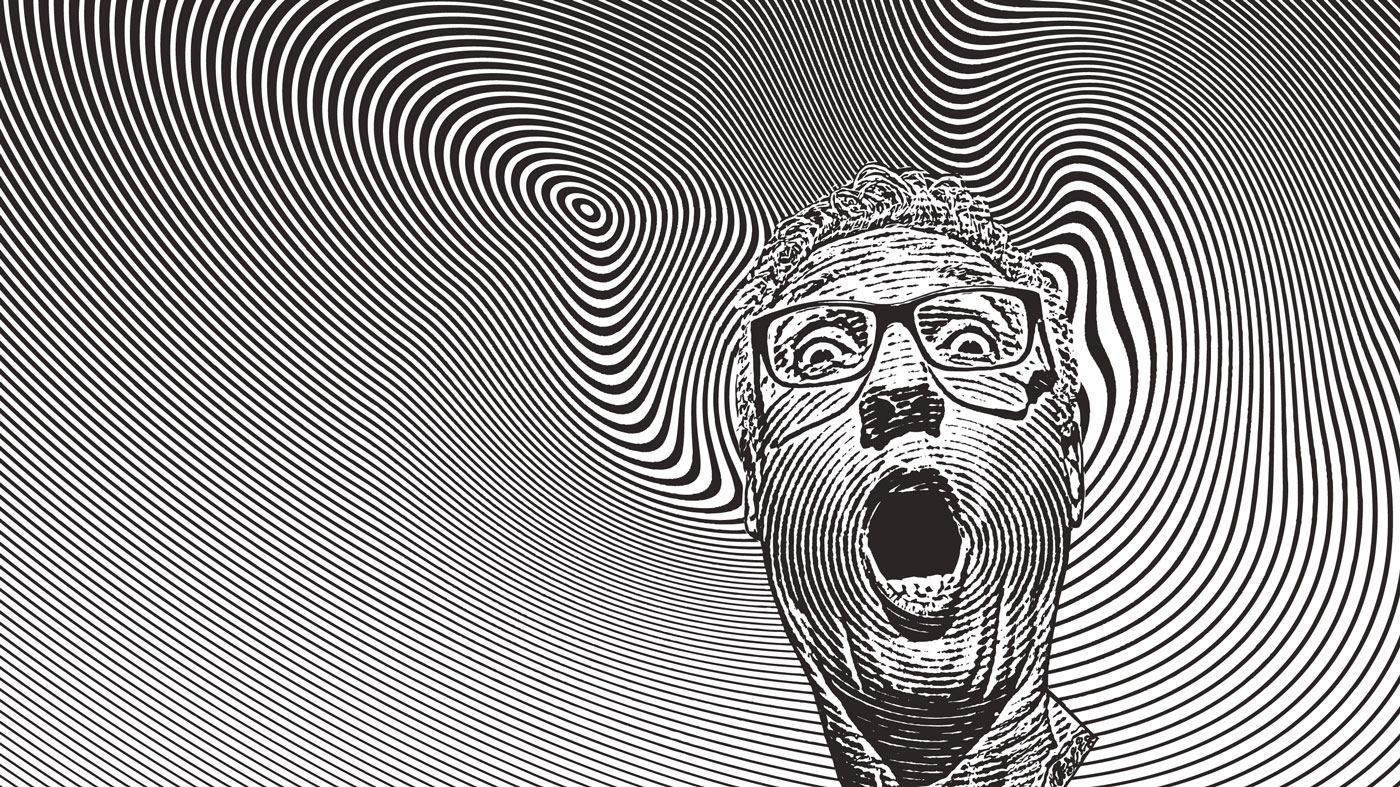The art that made Game of Thrones a modern classic
We speak to the concept artists that helped create the look of the best fantasy TV series of all time
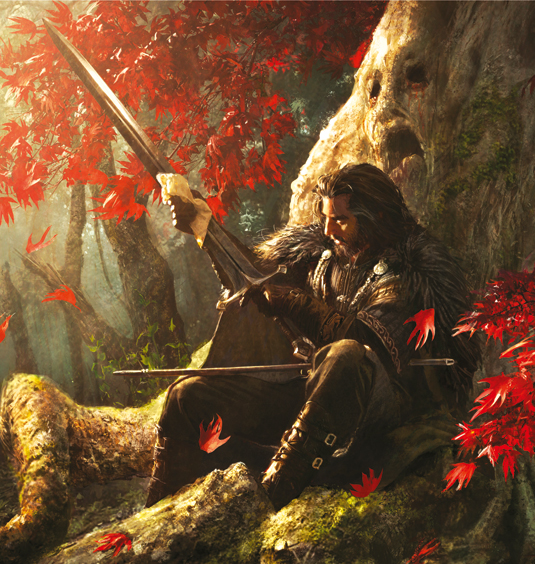
It wasn't long into his new job before Tobias Mannewitz started crossing the street every lunch break to enter the makeshift village of craftsmen forging swords, testing catapults, painting murals, and preparing the four huge sets for filming Game of Thrones.
"Essentially, all of Northern Ireland is the set for Game of Thrones," says the visual effects concept artist. "But at the heart of it is the former wharf building Paint Hall," located on Belfast's reclaimed Queen's Island. "Being able to walk into these sets gives you such a great feeling of being involved in the process, and our work on the CG pieces greatly benefited from that," says Tobias.
While other locations include Malta and Iceland, it was his Belfast-based second season work that won Tobias an Emmy for special visual effects in 2012. Yet he nearly didn't work on it at all.
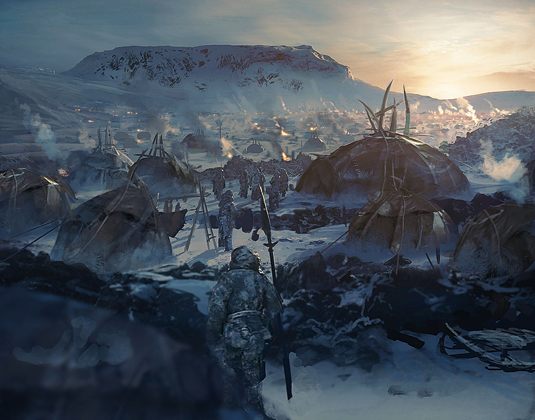
Restless after years of generating concept art for games, Tobias was looking for a new challenge. In 2011 his Berlin-based studio Karakter was told about a potential job for a new fantasy TV series, and it was, understandably, intrigued.
In fact, hiring artists for the new HBO series A Game of Thrones wasn't going great. "The team had a very difficult time recruiting VFX concept artists for the show, because no one knew whether it was any good, or whether it'd be worth spending a full summer in rainy Belfast," admits Tobias. Then, inspired by a poster of a troubled Eddard Stark sat on the Iron Throne, Karakter threw its hat into the ring, and got the job.
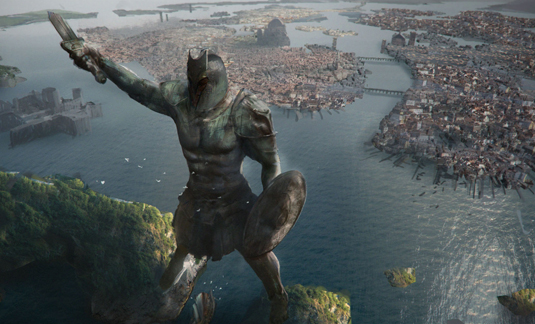
The source
He's not the only artist to fall under the spell of George RR Martin's A Song of Ice and Fire novels – a fantasy epic fuelled by power-lust and deceit with all-too-human characters looming large, only to vanish like breath on a razor blade. Since the 1996 publication of the first book A Game of Thrones, artists have been seduced by its gritty, uncensored action.
Fantasy Flight Games (FFG) released two art books-worth of inspired art. Six towering fantasy artists, including Michael Komarck and John Picacio, worked on as many calendars, with Donato Giancola currently finishing one for 2015. The imminent release of the massive encyclopaedia A World of Ice and Fire is the latest in a string of books featuring original art, with French illustrator Marc Simonetti leading the charge.
Daily design news, reviews, how-tos and more, as picked by the editors.
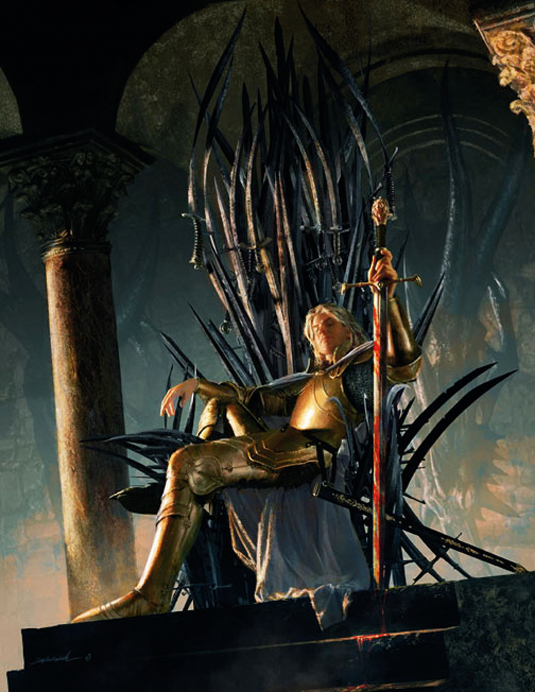
At the heart of it all is George RR Martin, although he's keen to tell us that his duties as Overseer Of All Ice and Fire Art aren't what they used to be. Speaking from his Santa Fe, New Mexico home, at the desk where he's penned every word of the series so far, he admits, "It's just become too much! Remember, I've been doing this for a long time.
"When I started with Fantasy Flight Games, I was very heavily involved, approving every painting. In theory that's fine, but then you're doing nothing but approving and commenting on paintings. I just do specific characters now."
And what characters! Divine, grotesque, chivalric and nefarious – in a genre fond of depicting morality in terms of black and white, Martin likes it when opposites collide, casting his gaze over the far more interesting greys. Of course, he has his favourite forms of this complex colour.
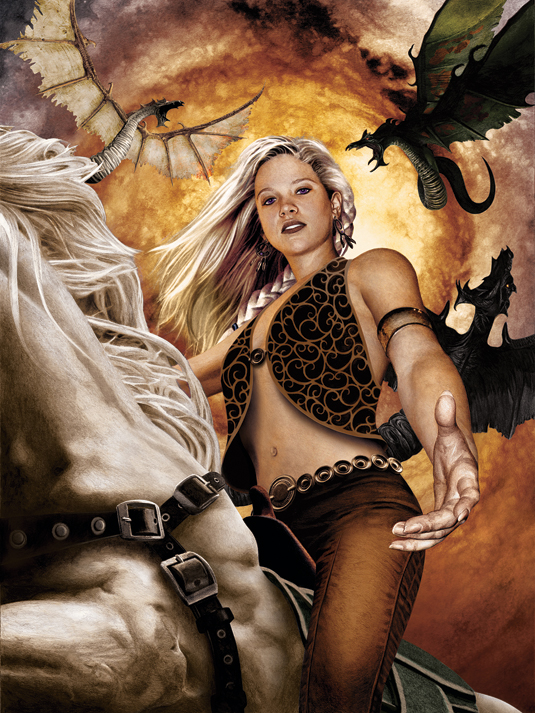
"It's like a parent choosing their favourite child, but I've got to admit I have a lot of affection for Tyrion, I have a lot of affection for Arya, and for Dany [Daenerys]… But I love all my characters. Even the ones I kill horribly."
With the continent of Ice and Fire art shifting and expanding apace, the author says he's become more liberal in allowing how artists depict his beloved offspring.
Speak to anyone who's had an official commission however, and there's a good chance they'll recall a crit from the author on how their work stands next to what's in his head. It seems that, like some of George's more wily characters, old habits die hard.
Making a classic
For the HBO TV series, art director Gemma Jackson and supervising art director Paul Inglis, had a list of things to consider before deploying their legion of artists and VFX teams. Remarkably, the expectations of millions of fans wasn't their first concern.
"With a normal film, there's 120 pages of script, and everything you need to discover and work from starts there," explains Paul. "With Game of Thrones there was so much more to consider."
As every serious artist knows, you start with shapes, not detail. Getting the philosophy of each main part of George's Known World was step one. The producers wanted to avoid using subtitles to cue viewers as to which part of the world was being shown.
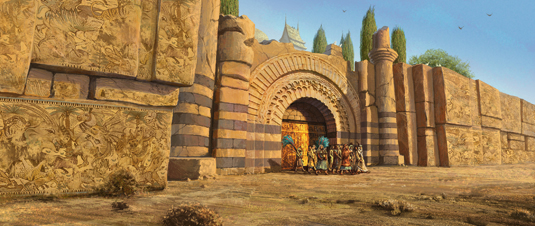
"We used colour, texture, level of decoration, styles of set dressing, weight of architecture and choice of landscape to help define each main area of the world," says Paul. King's Landing was warm-toned and lavish, with a "fecund feel," whereas Essos, although also warm, was arid. The Dothraki world was based on temporariness – buildings made from woven materials and lashed timbers.
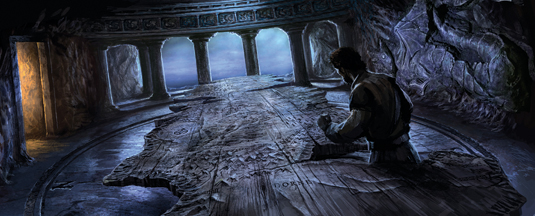
"We made Winterfell solid and squat, with a granite-like determination," says Paul. Castle Black was deteriorating, its interiors showing the ravages of every aspect of life spent inside: "The walls almost dripping with rendered fat and tallow".
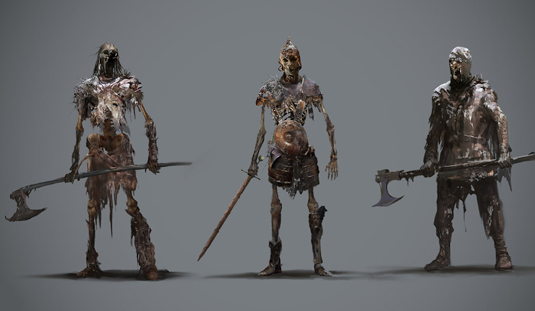
By now revelling in the change of pace from game art, Tobias started on some initial sketches of the giants – the latest, but certainly not the least, character addition to the fourth season. They were worked up by studio teammate Robert Simon, who also created "a fantastic range of new creature designs that featured in season four," saysTobias. "I'm very envious of Robert's character work, that's all I can say."
Next page: G RR Martin or J RR Tolkein - artists pick sides...

The Creative Bloq team is made up of a group of art and design enthusiasts, and has changed and evolved since Creative Bloq began back in 2012. The current website team consists of eight full-time members of staff: Editor Georgia Coggan, Deputy Editor Rosie Hilder, Ecommerce Editor Beren Neale, Senior News Editor Daniel Piper, Editor, Digital Art and 3D Ian Dean, Tech Reviews Editor Erlingur Einarsson, Ecommerce Writer Beth Nicholls and Staff Writer Natalie Fear, as well as a roster of freelancers from around the world. The ImagineFX magazine team also pitch in, ensuring that content from leading digital art publication ImagineFX is represented on Creative Bloq.
